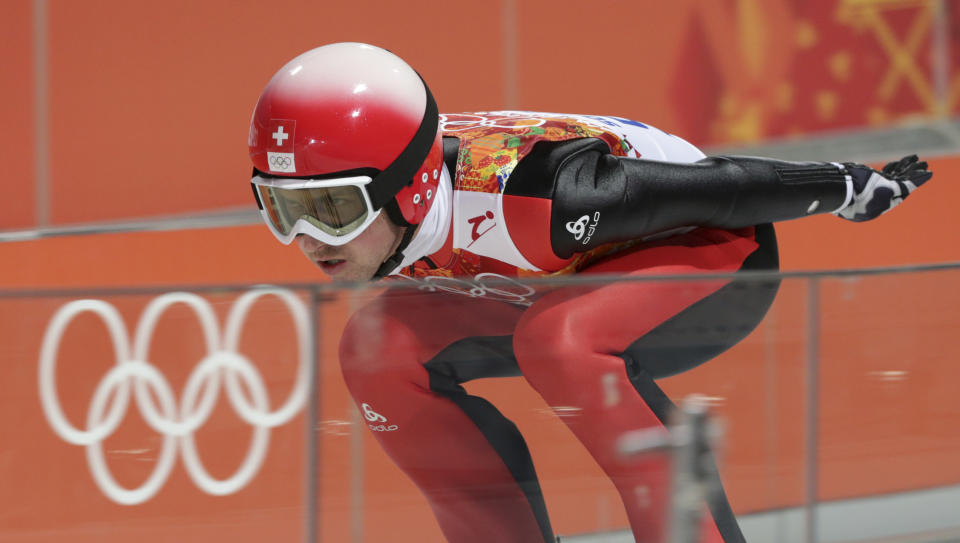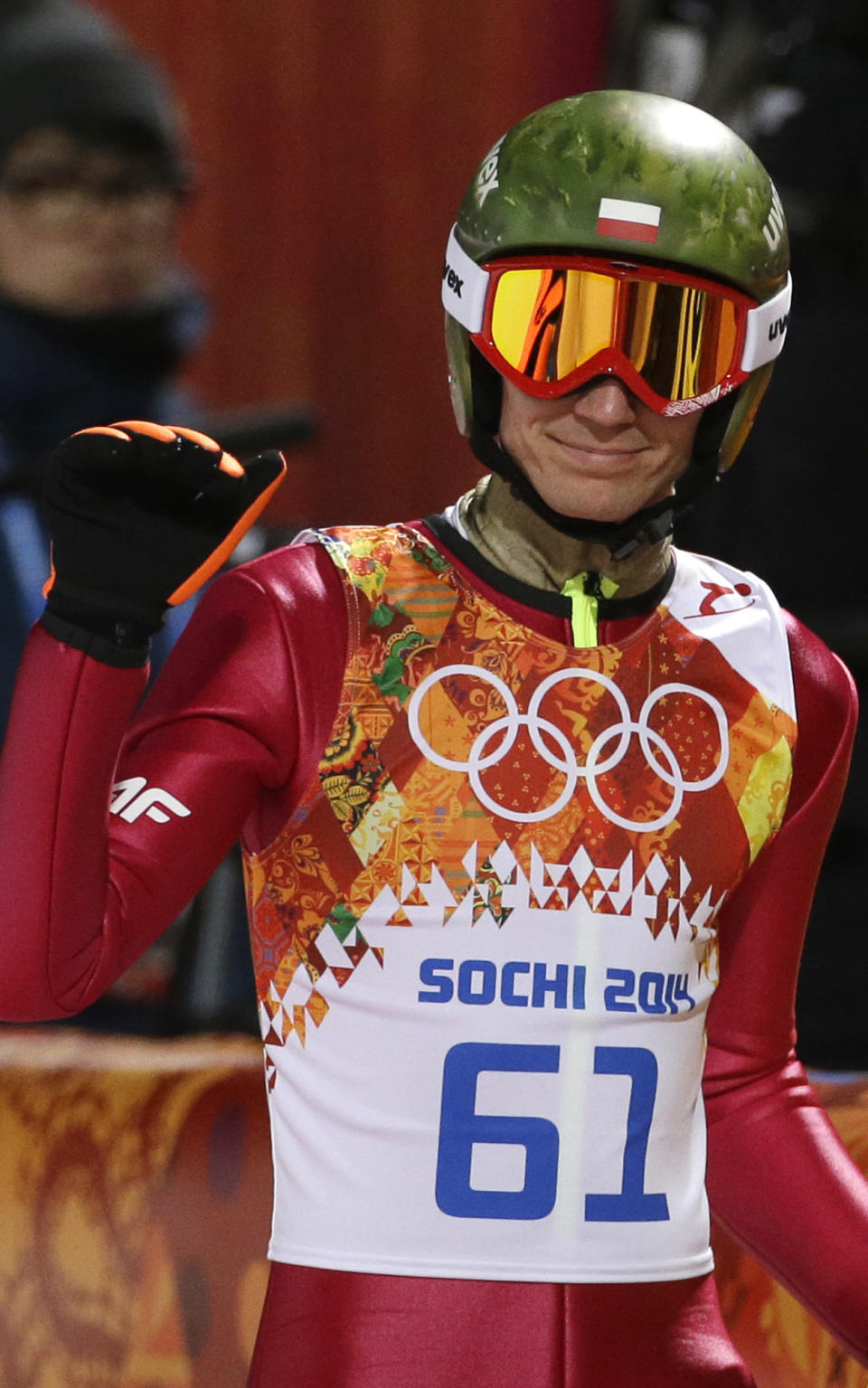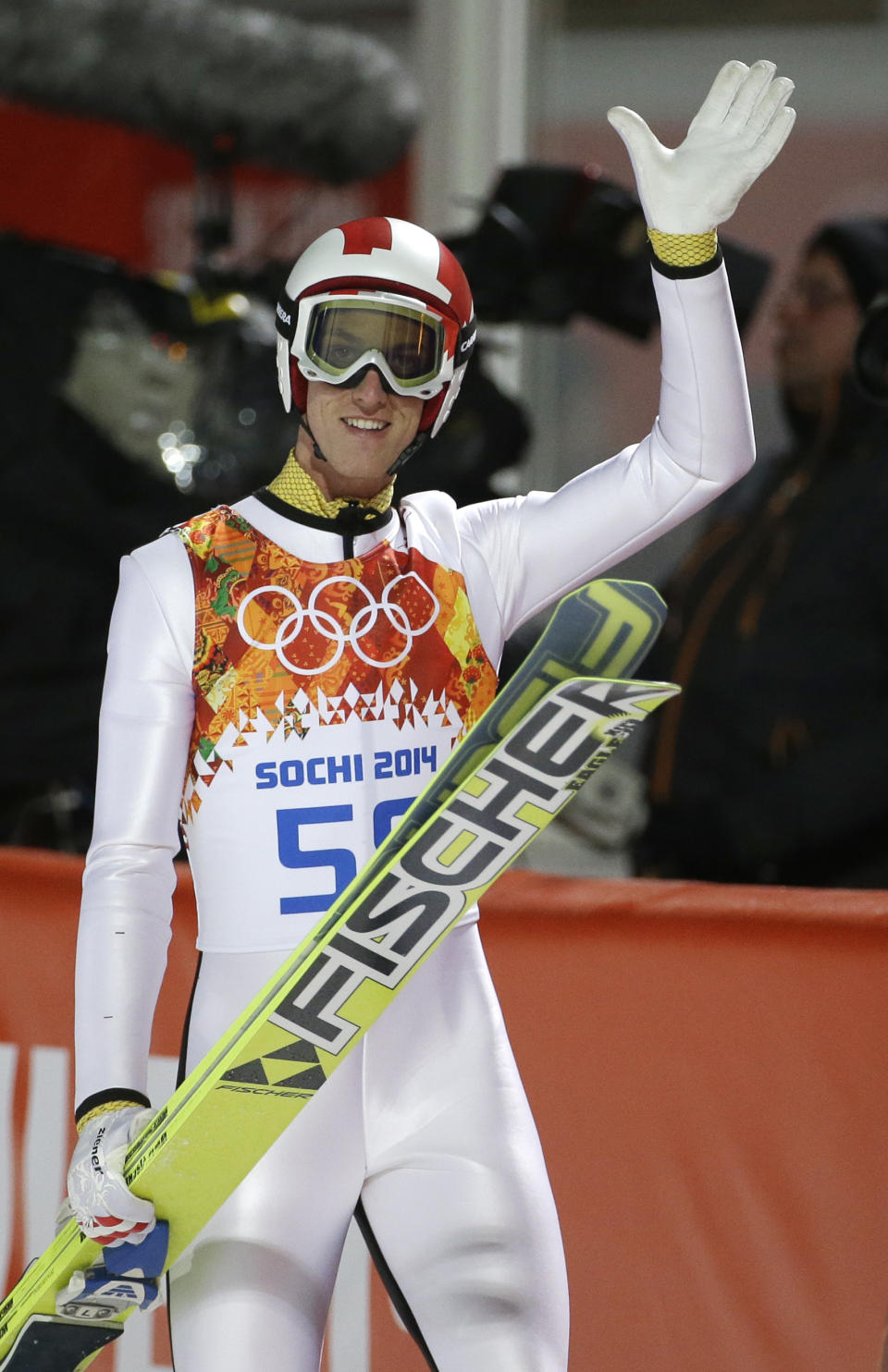5 Things: Men jump for 1st gold on Olympic hill
KRASNAYA POLYANA, Russia (AP) — The RusSki Gorki Jumping Center hosts its first gold medal event of the Sochi Games — the normal hill final Sunday evening on the hills overlooking Krasnaya Polyana.
Fifty of the world's best jumpers will vie for gold, with the total cut to 30 after the first of two rounds.
Here are five things to know about the first of three medal events on the men's ski jumping program at the Sochi Games — the men's individual large hill and team large hill will follow:
THE FAVORITE: Kamil Stoch of Poland is the World Cup leader and was strong in his training jumps despite having already qualified as one of the top-10 ranked jumpers. He has four World Cup wins this season. Veteran Simon Amman of Switzerland, competing in what he says will be his last Winter Games, is bidding to win a record fifth Olympic gold.
GOLD FOR GREGOR? Gregor Schlierenzauer, also among the podium favorites, has a record 52 World Cup victories. He won two bronzes at Vancouver, but has no Olympic gold. If he should win one Sunday, he'd join Matti Nykaenen of Finland as the only jumpers to win individual gold medals in Olympic, world championship and world championship ski flying events as well as the overall World Cup title. "Everything is possible and the (individual) Olympic gold is the last thing that I am missing," he said after he arrived in Sochi.
GO FIGURE: The normal hill at Sochi is a K95, or 95 meters (the large hill will be K125). The size of the hill is measured by its K-point, a spot on the hill that determines whether a jumper will earn or lose distance points. A jumper who reaches the K point will receive 60 points; those who go beyond on the normal hill will earn two points per meter. Jumpers can earn a maximum of 20 style points, based on their flight, landing and finish.
FLYING HIGH: The normal hill at the Sochi Games has a vertical drop of 106 meters from its starting position to the landing area, the equivalent of about a 30-story building. Competitors often reach speeds of up to 90 kilometers an hour (55 mph), and although they appear to be well off the ground, are never more than about six meters (20 feet) from terra firma.
ROUGH LANDING: Even that distance from the ground can pose problems if things go wrong, as three-time Olympic champion Thomas Morgenstern knows all too well. Morgenstern was hospitalized with skull and lung injuries after a training crash on Jan. 10, four weeks after suffering facial cuts, bruises and a broken finger following a bad landing during a World Cup event.



